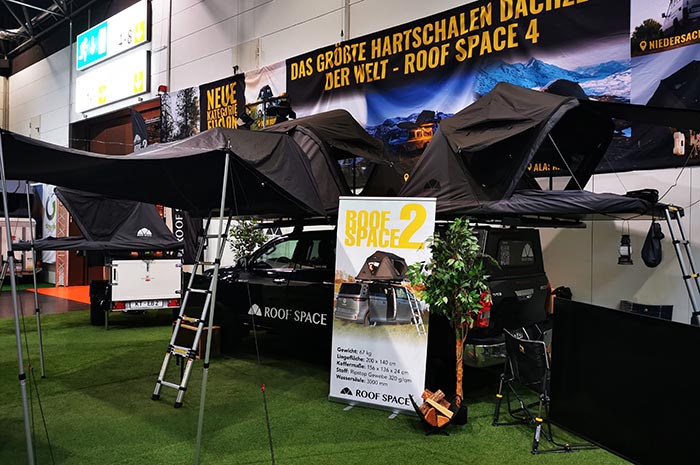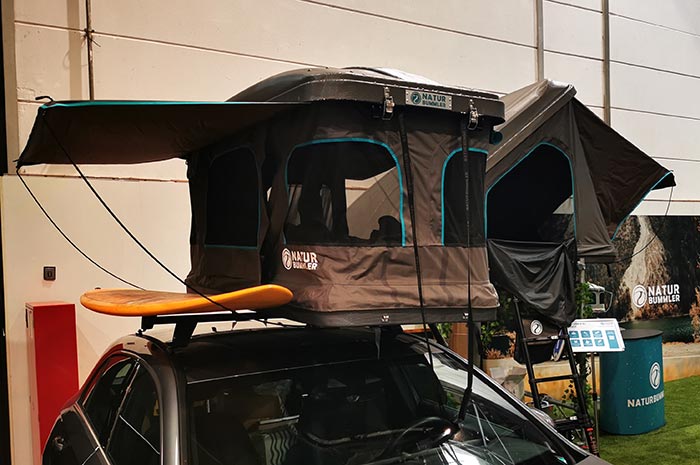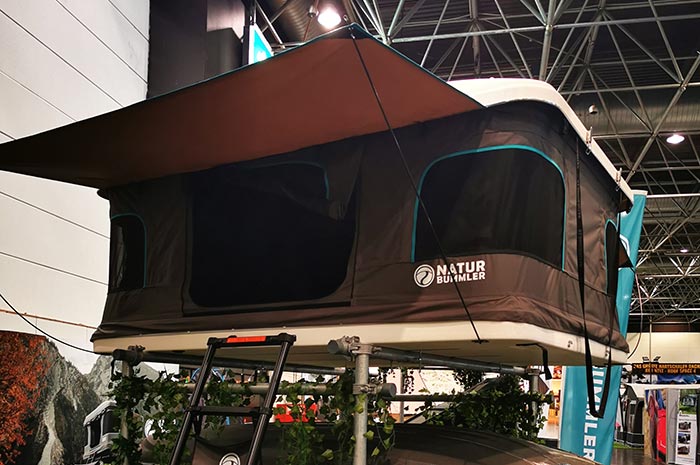Trend towards roof tents is unbroken - point of being bizarre
- Written by Portal Editor

Trend towards roof tents is unbroken - point of being bizarre
A strikingly unconventional or even strange idea that we came across during the Caravan Salon in Düsseldorf. At first, we couldn't believe our eyes when we saw this Lambo on the exhibition stand. Of course it's an eye-catcher! But as with many manufacturers, it's all about going big and not going home!

Car roof tents can transform your own vehicle into a mobile home and also offer the possibility of being almost completely independent on the road, whether it's an extreme expedition trip in an off-road vehicle or a small car or family station wagon; with the right roof tent, almost any vehicle becomes a practical camper.

The first roof tent for camping was already in Western Europe in the 1930s. In order to transport a roof tent on the roof of a vehicle, the permissible roof load of a vehicle must be checked in advance for safety reasons. In Germany, the standards applicable to loading in accordance with Section 22 of the Road Traffic Act apply.

In January 1937, the first roof tent was presented in the English-language magazine "Popular Science". It consisted of a collapsible steel frame that was mounted on the car roof and, when unfolded, was supported by a frame in the front area of the car, which also served as an entrance.

Since 1958 and to this day, the company Autohome in Rivarolo Mantovano, Italy, has been manufacturing roof tents for motor vehicles. In the GDR, there was a very simple roof tent for the Trabant since 1976, which was officially called the Müller car roof tent after the manufacturer and popularly known as Pension Sachsenruh.

There are now a large number of manufacturers worldwide with different solution concepts. In Germany alone, models from over 60 different manufacturers are available. Today, four different roof tent concepts have become established:

Folding roof tents: A folding roof tent is folded out to the side, usually beyond the vehicle's footprint. The pack size is usually half the sleeping area. It can be seen as the original variant of all roof tents.
Hard-shell roof tents: With hard-shell roof tents, the sleeping area is identical to the base area. The upper shell is raised using a crank mechanism or gas pressure springs. This type of tent is most similar to a roof box. The shells are made either from glass fibre reinforced plastic (GRP), by injection moulding or from aluminium.
Hybrid roof tents: When closed, a hybrid roof tent resembles a hard-shell roof tent. However, when opened up, the sleeping area extends beyond the base area. This creates a larger sleeping area.
Inflatable roof tents: With inflatable roof tents, the base and the tent system are filled with air using an electric pump. The sleeping area can be many times the pack size. They are the newest concept on the market.

By setting up the tent on the vehicle roof, you can sleep above the vehicle while the vehicle's own cargo space remains free for luggage. In contrast to most ground tents, roof tents are equipped with a mattress as a sleeping area. Depending on the model, this can be additionally dampened and ventilated with a spacer fabric (3D air mesh) or slatted frame.
Please read as well: